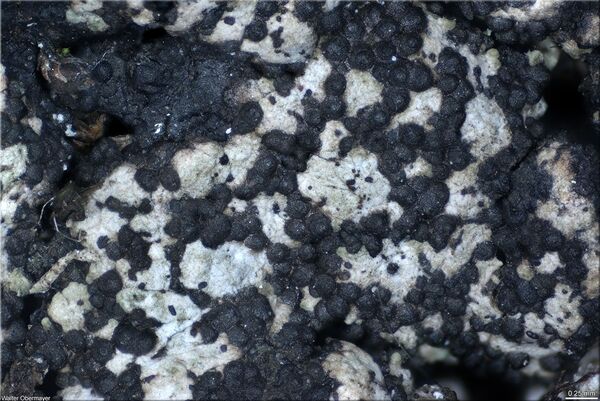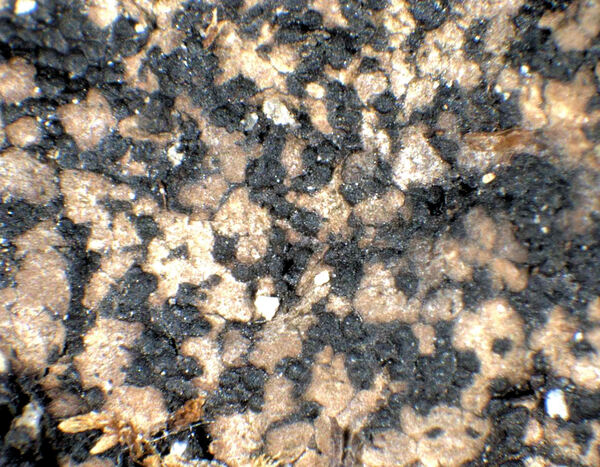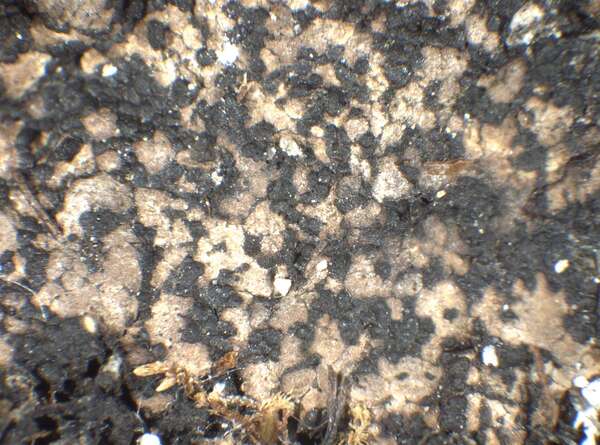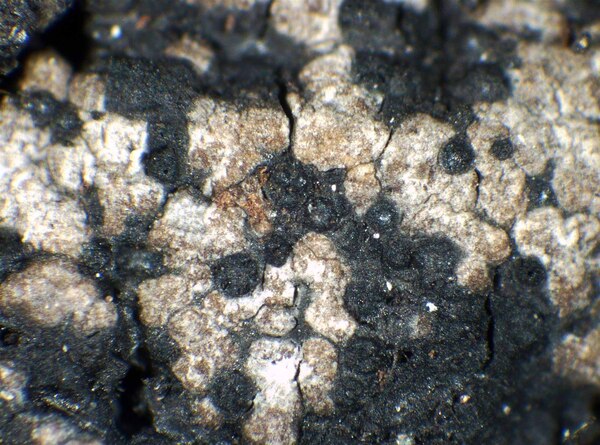Involucropyrenium waltheri (Kremp.) Breuss
Ann. naturhist. Mus. Wien, 98B: 40, 1996. Basionym: Verrucaria waltheri Kremp. - Flora, 38: 69, 1855.
Synonyms: Catapyrenium waltheri (Kremp.) Körb.; Dermatocarpon waltheri (Kremp.) Blomb. & Forssell
Distribution: N - TAA, Piem (Isocrono & al. 2004), Lig.
Description: Thallus squamulose to subcrustose, brownish, sometimes with a grey tinge, dull, thin. Squamules <1.5 mm broad and long, up to 0.3 mm thick, usually contiguous and forming a crust, flattened to slightly convex, smooth, irregular in shape, the margins entire to usually crenate-lobulate, not up-turned, surrounded by a dark hypothallus, the marginal squamules often somehow elongate. Lower surface dark, attached by 4-5 µm thick, dark rhizohyphae. Upper cortex paraplectenchymatous, 10-25 µm thick, of small isodiametrical cells, poorly differentiated from the algal layer (which occupies most of the thallus thickness); medulla not differentiated; lower cortex paraplectenchymatous, of polygonal cells. Perithecia frequent, developing on a dark hypothallus among the squamules, globose, projecting, with an involucrellum extending all around the perithecium, 0.2-0.35 mm across. Exciple brown to black, of tangentially arranged, elongated cells, surrounded by an entire, carbonaceous involucrellum; hamathecium of periphyses, interascal filaments absent. Asci 8-spored, clavate, with biseriately arranged spores, the wall I-. Ascospores 1-celled, hyaline, narrowly ovoid to club-shaped, thin-walled, (15-)17-21(-23) x (7.5-)8-10(-11) µm. Photobiont chlorococcoid. Spot tests: cortex and medulla K-, C-, KC-, P-, UV-. Chemistry: without lichen substances.Note: on calciferous, humus-rich soil in alpine grasslands, probably more widespread in the Alps.
Growth form: Squamulose
Substrata: soil, terricolous mosses, and plant debris
Photobiont: green algae other than Trentepohlia
Reproductive strategy: mainly sexual
Commonnes-rarity: (info)
Alpine belt: very rare
Subalpine belt: extremely rare
Oromediterranean belt: absent
Montane belt: absent
Submediterranean belt: absent
Padanian area: absent
Humid submediterranean belt: absent
Humid mediterranean belt: absent
Dry mediterranean belt: absent

Predictive model

Walter Obermayer CC BY-SA 4.0 - Source: Lichens of Noricum - http://lichens-of-noricum.uni-graz.at/
Austria, Kammspitz
2015

Walter Obermayer CC BY-SA 4.0 - Source: Lichens of Noricum - http://lichens-of-noricum.uni-graz.at/
Austria, Kammspitz
2015
Growth form: Squamulose
Substrata: soil, terricolous mosses, and plant debris
Photobiont: green algae other than Trentepohlia
Reproductive strategy: mainly sexual
Commonnes-rarity: (info)
Alpine belt: very rare
Subalpine belt: extremely rare
Oromediterranean belt: absent
Montane belt: absent
Submediterranean belt: absent
Padanian area: absent
Humid submediterranean belt: absent
Humid mediterranean belt: absent
Dry mediterranean belt: absent

Predictive model

Walter Obermayer CC BY-SA 4.0 - Source: Lichens of Noricum - http://lichens-of-noricum.uni-graz.at/
Austria, Kammspitz
2015

 INDEX FUNGORUM
INDEX FUNGORUM
 GBIF
GBIF
 DOLICHENS
DOLICHENS





